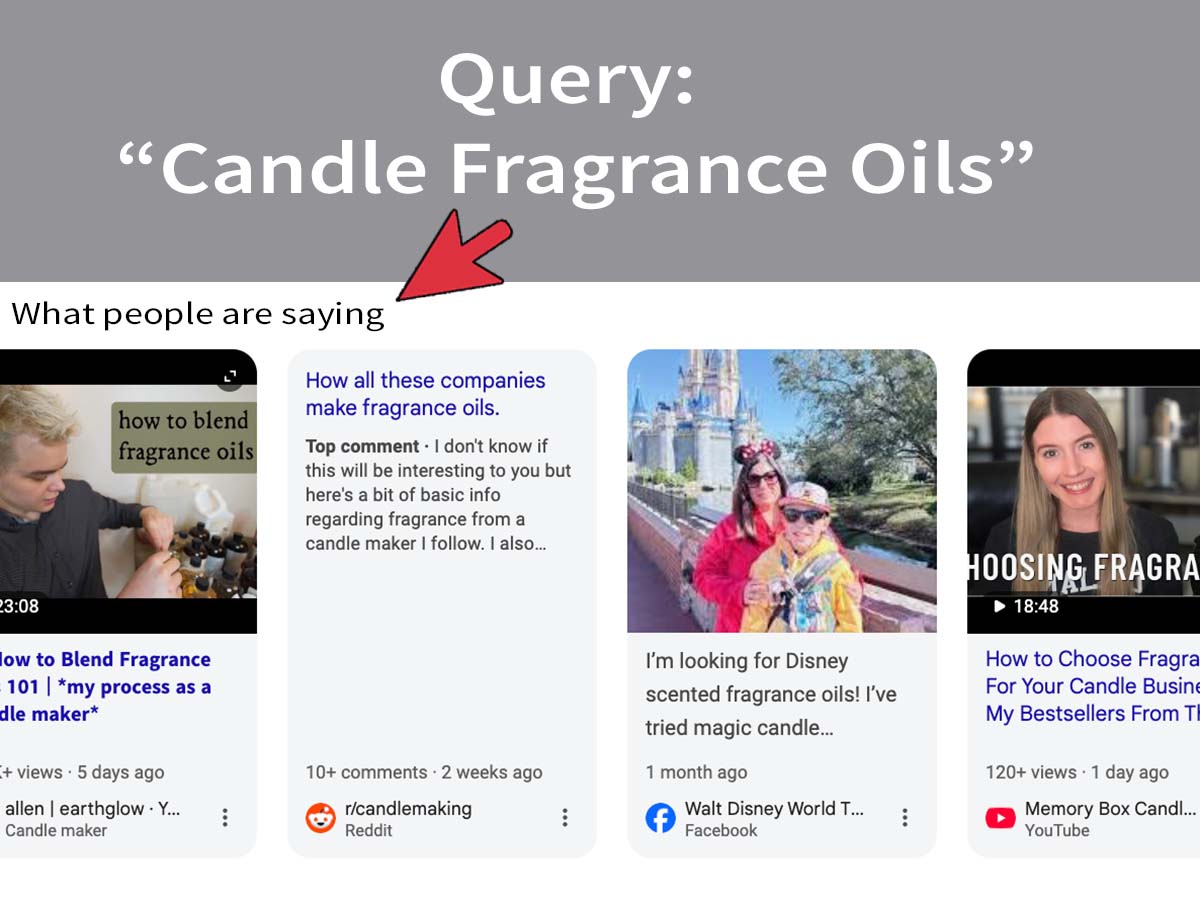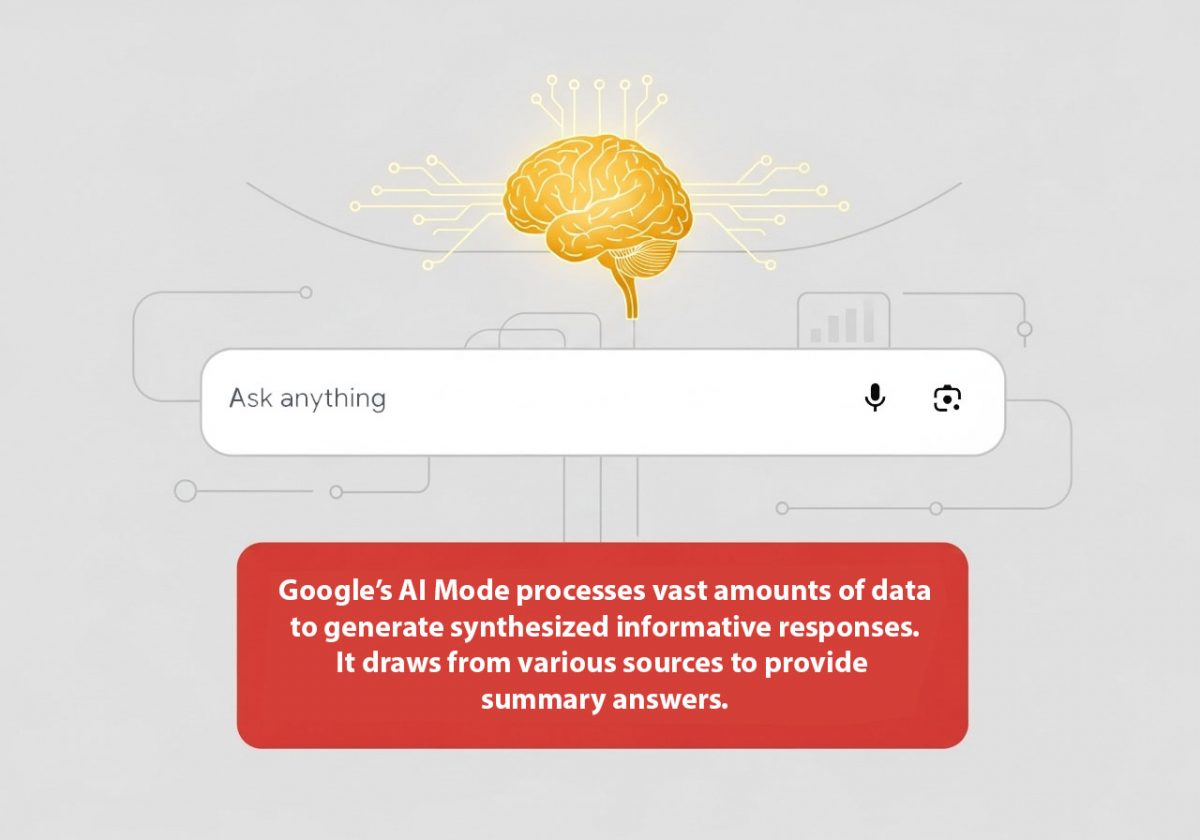How to Optimize Content for Synthesized Answers in AI Search
Instead of focusing on ranking individual pages for keywords, the focus shifts to creating content that AI systems can effectively synthesize into comprehensive answers for user queries. Digital marketing, SEO, and content creation is transition from search engine optimiztion to AI answer optimization.
In May 2018, I wrote about The Transition to Google’s Answer Engine. Knowing people are moving from searching on the Internet to asking questions, in October 2023, I wrote about AI Answers.
In Google Search, “AI Mode” is a relatively new feature that leverages generative AI to provide more conversational and detailed answers to user queries, moving beyond just a list of links. In July’s Q2 earnings call, Google CEO Sundar Pichai said, “AI Overviews now has over 2 billion monthly users across more than 200 countries and territories and 40 languages.” [1]
These statistics are staggering. Meeting searchers’ quest for answers now entails more nuanced questions that additionally have subtopics (Query Fan Outs). Simultaneously, while you search for relevant information and products across the web, Google search is now synthesizing its findings into concise, direct AI response.
Some have coined AI answer optimization (AIO), Algorithm Experience Optimization (AEO), and generative engine optimization (GEO), However, the core principle is simple: we’re no longer just optimizing for a list of links. We are optimizing to become the answer itself.
SEO, AIO, AEO, and GEO represent distinct approaches to digital marketing, though they are highly interconnected. Traditional SEO focuses on ranking content in search engine results pages (SERPs), while the latter emphasizes optimizing content for AI-powered systems and tools. Essentially, An AI SEO approach aims to make your website visible to search engines like Google, and seeks to make your content the preferred answer when users interact with AI assistants or chatbots.
What This Means
- We’ve moved past optimizing for keywords, we optimize for questions.
- We’ve moved past optimizing for pages, we optimize for “chunks” or “passages.”
- The focus has changed from largely being about websites, it’s now about a business entities overall web presence.
- It is harder to gain and track conversions, but CRO remains vital for revenue.
“Zero-click searches,” where the user’s query is answered on the results page itself, are now prevalent. Rand Fiskin stresses how outdated and worrisome it is that 60% of marketing leaders still think that increasing web traffic is a top SEO strategy. [2]
Today, offsite brand attention is just as important as what you publish on your site. Using traffic growth as a metric needs to change.
Answer Synthesis Processes
This means tailoring your content specifically for generative AI platforms and inclusion in LLM answer engines, in addition to traditional search.
For the writer, it’s about:
- Understanding core concepts of AI engines.
- Anticipating needed preparations for AI parsing.
- Tracking how your brand and content show up in synthesized answers.
- Agile AI search strategies that quickly update.
The Key Difference: Traditional SEO centers on efforts to rank in a link list; GEO centers on becoming the source of a direct, comprehensive answer. It’s the difference between being a pop-up shop on a busy street and being the go-to expert sought out for answers.
For the AI engine, it’s about:
- Data consumption from all over. Its digital scope encompasses collecting information from every corner of the web.
- Synthesizing disparate information bits into a woven together and coherent whole.
- Prioritizing and providing the “best” info based on relevance and quality.
- Constant learning and refinement. This means forever absorbing new data and tweaking its synthesized answers.
Early adoption can give your business an edge.
Exploding Topics states in its 50 NEW Artificial Intelligence Statistics (July 2025) report that “38% of medical providers use computers as part of their diagnosis.” Author Josh Howarth reports that 33% of businesses have started implementing limited AI use cases.
Every niche is unique. The medical industry has a commanding lead in healthcare AI synthesized answer adoption.
Here is an example of the AI answer process in action.
“What People Are Saying” Google SERP
The role of “What people are saying”:
Within this process, Google AI Mode seems to emphasize and display diverse perspectives and information. This feature is another user query response it gathers from points across the web.
This Google response highlights specific content snippets that it believes offers valuable insight or a direct answer to aspects of the user’s query. Others have reported seeing various formats of what people are saying in their search results. I’ve replicated this before short video clips and on mobile in expandable carousel format.
By testing and showcasing “What people are saying,” AI Mode seeks to offer a more comprehensive understanding of a topic that helps users explore different perspectives. This seems a bit like reading product reviews to informed decisions. Shoppers using AI Mode like learning from real-world experiences and opinions available on the web.
How is AI Search Reshaping SEO?
It takes a new mindset to understand how Google AI responses generally work.
My engineering mind always likes knowing what’s going on. What is happening behind the scenes.
When a searcher raises a question, AI Mode strives to understand the underlying intent behind the query. We learn directly from Google how this new AI Mode comes up with answers. This builds on how it used Ask a follow up question in AI Overviews.
“Query fan-out and information gathering: It expands the original query into a series of related questions and searches across a wide range of web sources simultaneously.
Identifying relevant snippets: AI Mode identifies passages or sections of content that directly address parts of the expanded query, even if they’re not at the top of a webpage.
Displaying synthesized answers and source links: AI Mode then presents a synthesized answer, drawing information from these relevant snippets, along with links back to the original sources where users can delve deeper.” – Get AI-powered responses with AI Mode in Google Search
Necessity of Answer Citations in the AI-Driven Landscape
Adapt an “AI thinking” approach that values citations along with inbound links.
Winning inclusion in AI Mode Content now requires more than indexable and informative content. It means being more providing content that is “generally relevant” to your audiences’ queries. It requires SEO relevance engineering and being the most relevant answer.
Currently a whopping 12% Of People Also Ask results are found in Google AI Overviews.
Optimization for Synthesized Answers: Clear Steps
Steps to gain mentions and visibility in large language models (LLMs) responses:
- Write with a logical flow: Capsulize your article’s introduction. Expand on complex question answers in your main content, provide key takeaway points, and, lastly, offer a helpful summary.
- Structure your QandA: Direct, immediate, and concise answers should immediately follow questions.
- Answer in the correct tone: Keep answers positive, simple, and without added promotion. Focus on matching the queries intent.
- Take advantage of structured data: AI agents quickly find, categorize, extract, and match answers to queries when your content supports the Answer Synthesis Processes with schema markup.
- Use Natural Language Processing: Avoid advanced jargon that’s above your audience’s knowledge or manner of speaking.
- Shorten sentences and paragraphs: In-depth articles can provide focused answers. Paragraphs with only 75-150 words provide a better user experience.
- Chunk your answers: Leverage bulleted and numbered lists for succinct clarity.
- Use headings: Incorporate H2s and H3s to introduce new content concepts. This article structure works great for approximately every 300 words.
- Adapt for multisearch: People are using images, text, audio, and video when searching to find solutions. Strategize for users engaging with content in multiple ways.
What are Timeless Content Principles?
AI technology remains true to the following pillars of content creation:
- Provide value.
- Do so with clarity.
- Be a trustworthy source.
Implementing these strategies requires a major content update in how content is planned, created, and structured. It’s a detailed process that requires technical SEO, expert writing, and constant AI SERP analysis. While these steps provide a strong foundation, strategic application and implementation is where many teams need support.
Embrace Synthesized Answer Optimization
Turn obstacles into opportunities. The internet’s information landscape has fundamentally changed. It’s exciting, fast-paced, perhaps daunting, but full of opportunity. The digital world is reshaping at this moment.
This is where we come in. Partner with Hill Web Marketing to create and structure your content. We’ll help you adapt and remain relevant as your future makes this imminent. Let’s shape it together.
Request Your Marketing Plan With AI Measurement
Sources:
[1] https://blog.google/inside-google/message-ceo/alphabet-earnings-q2-2025/
[2] https://sparktoro.com/blog/in-a-zero-click-world-traffic-is-a-terrible-goal/
